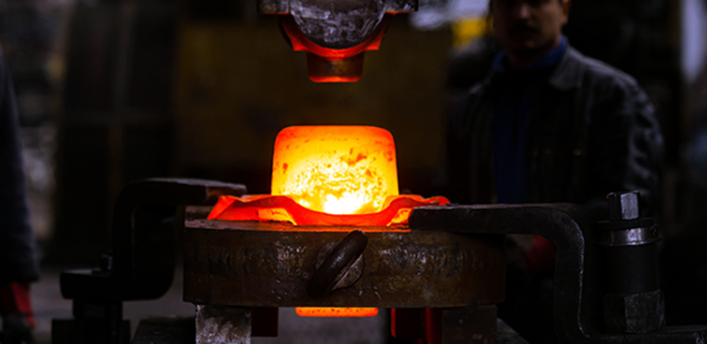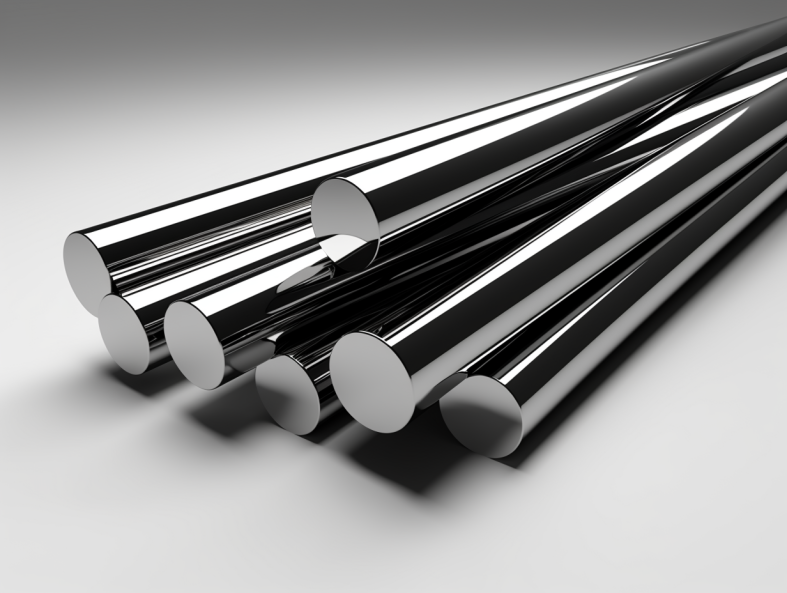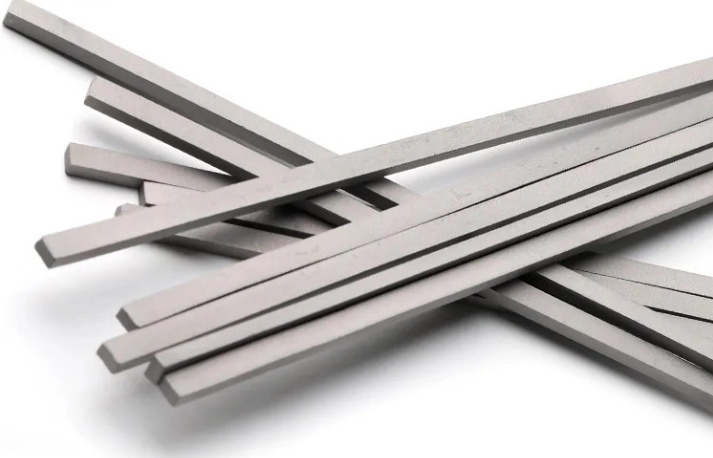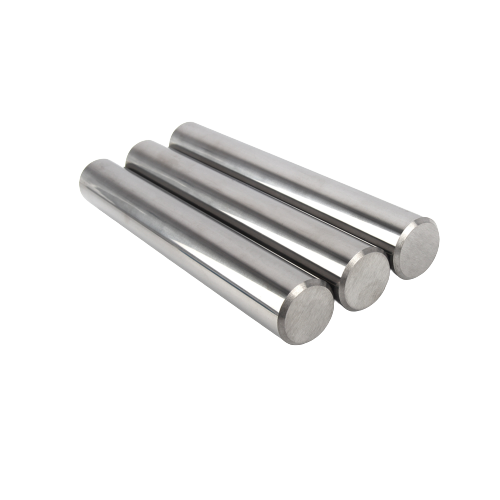3 Powerful Methods: How Metal Working Shapes the Future of Carbide Buttons
Carbure de tungstène boutons, renowned for their exceptional hardness and wear resistance, are indispensable components in industries ranging from mining and construction to oil and gas exploration. But did you know that the manufacturing process, particularly the forging method employed, can significantly influence the final properties and performance of these critical components? This comprehensive guide delves into the intricacies of three prominent forging techniques— hot-forging, cold-forging, and swaging —unveiling how each method shapes the microstructure, strength, and overall quality of tungsten carbide buttons.
Beyond Hardness: Why Forging Matters in Carbide Button Production
The Science of Shaping: Understanding the Impact of Forging
- Affinement de la microstructure : Les procédés de forgeage, qui impliquent une déformation plastique contrôlée, affinent la structure du grain du carbure de tungstène, améliorant ainsi sa solidité, sa ténacité et sa résistance à l'usure.
- Contrôle de la densité et de la porosité : Le forgeage permet d'éliminer les vides et les porosités internes, ce qui donne des boutons en carbure plus denses et plus durables, capables de résister à des conditions d'utilisation extrêmes.
- Complexité et précision des formes : Les différentes techniques de forgeage offrent plus ou moins de flexibilité pour obtenir des formes complexes et des dimensions précises, répondant ainsi aux exigences d'applications spécifiques.
Delving into the Details: Hot-Forging, Cold-Forging, and Swaging Explained
Heat, Pressure, and Precision: A Closer Look at Each Method
1. Hot-Forging:
- Process: Involves heating the tungsten carbide preform to a high temperature (typically above its recrystallization temperature) before shaping it using compressive forces in a die.
- Avantages :
- Lower forging forces required due to reduced material strength at high temperatures.
- Enhanced ductility, allowing for greater shape changes and complex geometries.
- Improved grain flow and uniformity, enhancing mechanical properties.
- Limites :
- Potential for oxidation or decarburization at high temperatures, requiring controlled atmospheres or protective coatings.
- Higher energy consumption compared to cold-forging.
- May require additional machining steps to achieve final tolerances.

2. Cold-Forging:
- Process: Performed at room temperature or slightly elevated temperatures, utilizing high compressive forces to shape the tungsten carbide preform within a die.
- Avantages :
- Enhanced strength and hardness due to work hardening during deformation.
- Excellent surface finish and dimensional accuracy, often reducing or eliminating the need for secondary machining.
- Lower energy consumption compared to hot-forging.
- Limites :
- Higher forging forces required due to increased material strength at lower temperatures.
- Limited formability, restricting the complexity of achievable shapes.
- May require annealing steps to relieve internal stresses induced during cold working.
3. Swaging:
- Process: A specialized forging process where a tungsten carbide rod or tube is radially compressed and reduced in diameter by a set of rotating dies.
- Avantages :
- High production rates and efficiency, particularly for cylindrical or symmetrical shapes.
- Excellent surface finish and dimensional control.
- Can be used to create elongated shapes with high length-to-diameter ratios.
- Limites :
- Limited shape flexibility, primarily suited for cylindrical or near-net-shape components.
- May require additional machining steps for complex geometries.
- Tooling design and setup can be more complex compared to open-die forging.
Comparing the Characteristics: How Forging Methods Influence carbide Button Properties
From Grain Structure to Surface Finish: Key Differentiators
| Fonctionnalité | Hot-Forged Buttons | Cold-Forged Buttons | Swaged Buttons |
|---|---|---|---|
| Structure du grain | Fine, uniform grain size due to recrystallization | Deformed, elongated grains due to cold working | Refined grain structure with directional alignment |
| Dureté (HV30) | 1400 – 1800 | 1600 – 2000 | 1500 – 1900 |
| La force | High toughness and impact resistance | Very high strength and wear resistance | Excellent combination of strength and ductility |
| Finition de la surface | Good, but may require secondary machining | Excellent surface finish and dimensional accuracy | Very good surface finish with minimal surface defects |
| Shape Complexity | High degree of shape complexity achievable | Limited to simpler shapes | Primarily suited for cylindrical or near-net-shape components |
| Coût | Modéré | Haut | Low to moderate |
Applications Across Industries: Where Each Button Type Excels
From Drilling to Wear Parts: A Diverse Range of Use Cases
- Exploitation minière et construction : Hot-forged carbide buttons are widely used in drilling bits, cutting picks, and other tools subjected to high impact and abrasive wear.
- Exploration pétrolière et gazière : Cold-forged carbide buttons are preferred for downhole drilling tools, where extreme hardness and wear resistance are paramount.
- Travail des métaux et usinage : Swaged carbide buttons find applications in wear parts, cutting inserts, and tooling components requiring high dimensional accuracy and smooth surfaces.
TRUER: Your Partner in Precision Forging
Meeting Industry Demands: A Comparative Analysis
| Fournisseur | Pays | Fourchette de prix (par pièce) | Spécialités |
|---|---|---|---|
| TRUER | Chine | $10 – $50+ | Custom-engineered forging solutions, advanced material expertise, rapid prototyping capabilities |
| Élément six | ROYAUME-UNI | $15 – $60+ | High-performance carbide grades, specialized forging techniques for demanding applications |
| Kennametal | ÉTATS-UNIS | $12 – $55+ | Wide range of standard and custom forged buttons, extensive industry experience |
| Sandvik Coromant | Suède | $14 – $70+ | Innovative forging processes, focus on sustainability and performance optimization |
Remarque : Les prix sont approximatifs et peuvent varier considérablement en fonction de la taille du bouton, de sa géométrie, de sa qualité, de sa quantité et d'autres facteurs.
Weighing the Pros and Cons: A Comparative Look at Forging Methods
Making Informed Decisions: Advantages and Limitations
| Forging Method | Avantages | Limites |
|---|---|---|
| Hot-Forging | - Forces de forgeage réduites<br> - Amélioration de la ductilité<br> - Amélioration de la circulation des grains | - Potentiel d'oxydation<br> - Consommation d'énergie plus élevée<br> - Peut nécessiter un usinage secondaire |
| Cold-Forging | - Résistance et dureté accrues<br> - Excellente finition de surface<br> - Réduction de la consommation d'énergie | - Forces de forgeage plus élevées<br> - Formabilité limitée<br> - Peut nécessiter un recuit |
| Swaging | - Taux de production élevés<br> - Excellent contrôle dimensionnel<br> - Convient aux formes allongées | - Flexibilité limitée de la forme<br> - Peut nécessiter un usinage secondaire<br> - Outillage complexe |
Beyond the Basics: Factors Influencing Forging Outcomes
Optimizing Button Performance: Key Considerations
- Material Properties: The composition, grain size, and initial properties of the tungsten carbide powder influence its forgeability and final button characteristics.
- Forging Parameters: Temperature, pressure, strain rate, and die design play critical roles in determining the microstructure, density, and overall quality of forged buttons.
- Heat Treatment: Post-forging heat treatments, such as annealing or stress relieving, can further tailor the mechanical properties and dimensional stability of carbide buttons.
Frequently Asked Questions: Addressing Your Forging Queries
1. How do I choose the most suitable forging method for my specific tungsten carbide button application?
The optimal forging method depends on factors like the desired button shape, required mechanical properties, production volume, and cost considerations. Our technical experts can provide personalized guidance based on your specific needs.
2. What are the key quality control measures employed during the forging process to ensure consistent button quality?
Throughout the forging process, rigorous quality control measures are implemented, including raw material inspection, in-process monitoring of forging parameters, dimensional checks, hardness testing, and microstructural analysis.
3. Can TRUER provide forged tungsten carbide buttons with specialized surface treatments or coatings?
Yes, we offer a range of surface treatments, such as polishing, grinding, and coating, to further enhance the performance and longevity of our forged buttons in demanding applications.
4. What is the typical lead time for ordering custom-forged tungsten carbide buttons from TRUER?
Lead times for custom orders vary depending on factors like the complexity of the design, forging method employed, quantity required, and current production capacity. Contact our sales team for a personalized quote and lead time estimate.For more information, please click ici.
5. Does TRUER offer technical support or consulting services related to the design and optimization of forged tungsten carbide buttons?
Yes, our team of experienced engineers provides comprehensive technical support, including material selection guidance, design optimization, prototyping assistance, and troubleshooting support, to ensure your success.




